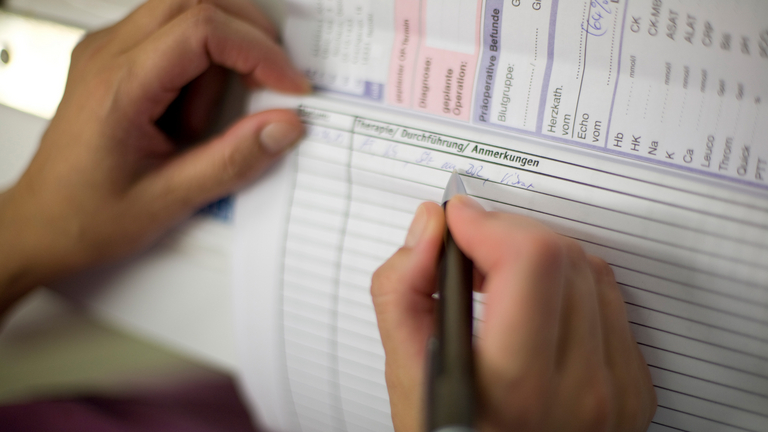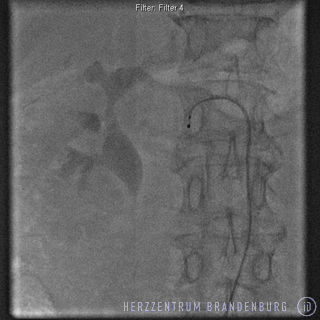
Renal denervation
Renal denervation is an additional treatment option for patients with resistant hypertension. This procedure is usually performed in a catheterization laboratory.
Contact
What is renal denervation?
The treatment of high blood pressure primarily involves the use of different antihypertensive drugs,
which may need to be used in combination. If this drug-based treatment is not sufficient in controlling blood pressure, treatment can be expanded to include a procedure known as renal denervation.
This procedure involves the use of catheter-based radiofrequency ablation to destroy nerve fibers around the renal arteries. Results from different centers have demonstrated that this procedure is successful in achieving significant and sustained reductions in blood pressure in the majority of cases.
Development of renal denervation
As this is a relatively new procedure, and has only been tested in clinical studies since 2009, there are currently no long-term data from beyond 2009. In spite of this, it is likely that the reduction in blood pressure achieved by this procedure will be sustained for much longer than just those few years.
What happens during renal denervation?
The procedure takes approximately 40 - 60 minutes. The catheter is introduced via a blood vessel in the groin, and is advanced to the renal artery. In order to ensure that the procedure does not cause any pain to the patient, a local aesthetic is applied to the groin area. Although there is no need for general anesthesia,
both sedatives and analgesics are administered throughout the procedure in order to ensure that the patient remains comfortable.
A special catheter is used to deliver radiofrequency pulses to different sites along the renal artery, with each radiofrequency pulse lasting approximately 2 minutes.
Both renal arteries are treated in this manner and, depending on the patient's anatomy, the entire process will usually involve 8-12 radiofrequency pulses.
Once radiofrequency ablation has been completed, the specialist catheter system is removed and a pressure bandage is applied to the groin area.
The patient will be allowed to eat and drink 2 hours after the procedure, while the pressure bandage will need to remain in place until the following morning.

Follow-up treatment
Patients will be required to take blood-thinning medication (100mg acetyl salicylic acid and clopidogrel) for a duration of three months. Patients will also be required to continue taking their antihypertensive drugs as prescribed prior to the procedure. This is because the antihypertensive effects produced by procedure take a number of days or even weeks to develop.
